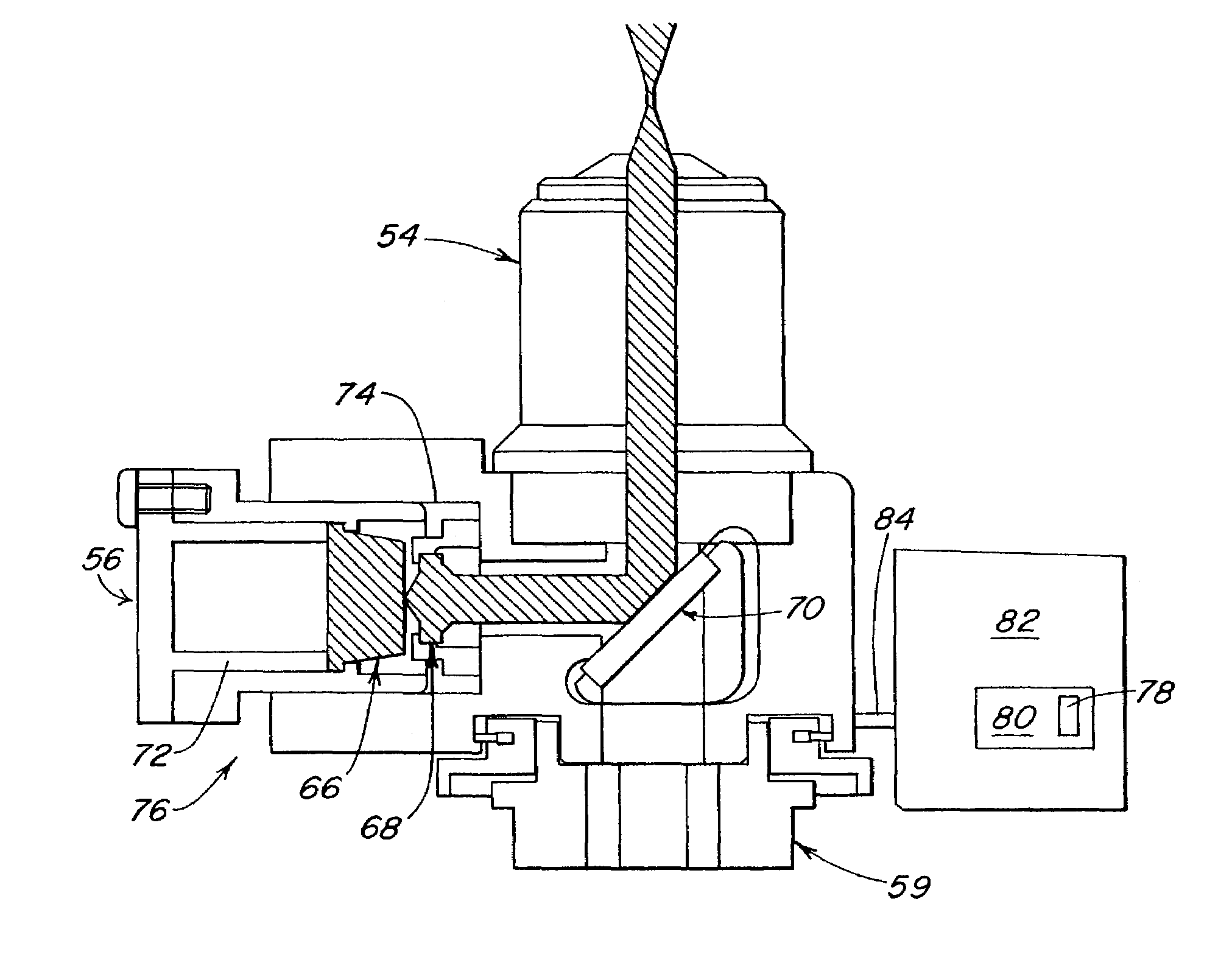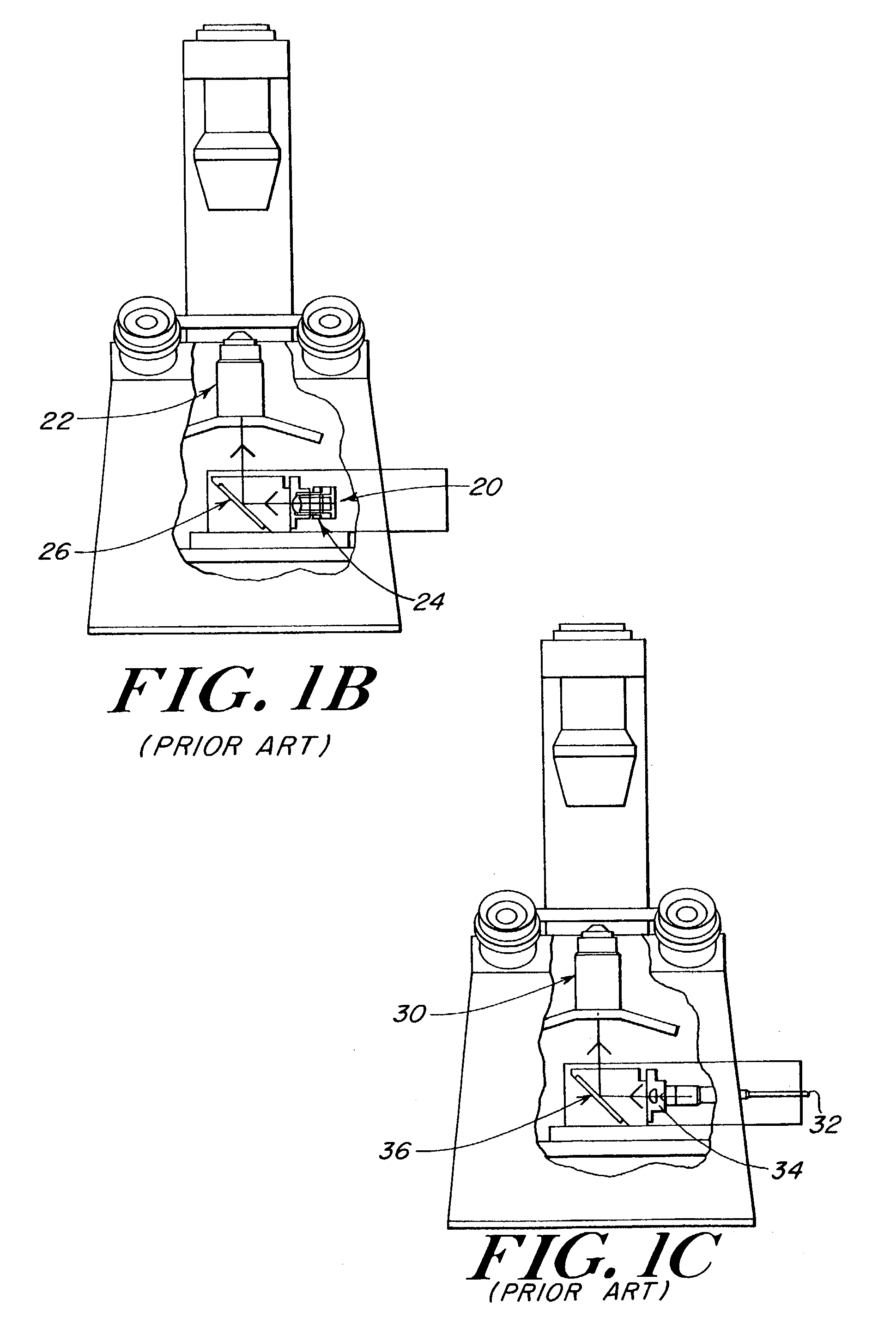Microscope turret mounted laser EPI-illumination port
a laser and microscope technology, applied in the field of adapting a laser to a microscope, can solve the problems of fertility failure, significant impediment in the tougher layers,
- Summary
- Abstract
- Description
- Claims
- Application Information
AI Technical Summary
Benefits of technology
Problems solved by technology
Method used
Image
Examples
example 1
Laser Module, Microscope Specifications, and Design
[0084]A Nikon TE-300 laser-equipped inverted microscope was used, which has the IR laser beneath the stage. Laser light proceeds up through the objective and is focused on the target. The laser module (ZLTS, Hamilton Thorne Research, Beverly, Mass.) has maximum power 200 mW at λ=1480 nm, and is utilized in pulsed mode. Peak transmitted laser power through the objective is approximately 140 mW. Pulse duration is adjustable in half millisecond increments from 0.5 to 25 ms. In addition to the laser diode itself, the laser module includes control board, adjustable collimating lens and dichroic mirror, and is inter-locked to prevent potentially hazardous operation.
[0085]The laser module fits into the microscope filter cube slot under the stage and the beam is deflected by a dichroic mirror along the optic axis of the microscope. The nearly collimated beam is directed toward the back aperture of a 40×, 0.60 numerical aperture (NA) objecti...
example 2
Laser-Assisted Zona Dissection with Bovine Eggs
[0087]Bovine eggs are readily available. They constitute a useful and cost effective model for testing laser-assisted zona drilling protocols. The Nikon TE300 inverted microscope is used with illumination source and condenser above specimen and objective below. The Petrie dish specimen chamber (wall thickness 1 mm, diameter 50 mm) is on a motorized stage. The eggs settle at the bottom of the dish and the objective is focused on the edge of the ZP, about 75 μm into the medium.
[0088]A typical zona drilling is shown in FIG. 8 for a bovine oocyte. The egg diameter is about 150 μm and the thickness of the zona pellucida, the translucent shell surrounding the egg, is about 12 μm. The laser power was set to 100 mW delivered at the focal point and three points in the ZP corresponding to pulse duration 1.5, 3, and 4.5 ms. Beam diameter to 1 / e2 was 6.2 μm, independent of beam power. The hole diameters are 4.3, 7.8, and 10.5 μm; the hole diameter ...
example 3
Thermal Predictions
[0091]Standard Conditions
[0092]The objective (NA=0.6, 40×, infinity corrected) used transmits 71% of the incident energy at λ=1480 nm. The typical laser beam power arriving at the vicinity of the ZP following transmissive, reflective, and attenuation loss is calculated as 100 mW. The typical beam focal radius is calculated as a=3 μm, assuming the beam is passing up through an inverted microscope into medium of refractive index n=1.333. The thermal history or isothermal contour expected along the path of the laser beam and especially in the vicinity of the pre-embryo is derived as described below.
[0093]Thermal Constants and Source Function Geometry
[0094]Using medium comprised of almost pure water and the cellular material is approximately 80% water, the infrared absorptances in the medium and cell at λ=1480 nm are approximately that of H2O and cannot be significantly lower. Similarly, the thermal conductivity of the material will not be higher than that of water. B...
PUM
 Login to View More
Login to View More Abstract
Description
Claims
Application Information
 Login to View More
Login to View More - R&D
- Intellectual Property
- Life Sciences
- Materials
- Tech Scout
- Unparalleled Data Quality
- Higher Quality Content
- 60% Fewer Hallucinations
Browse by: Latest US Patents, China's latest patents, Technical Efficacy Thesaurus, Application Domain, Technology Topic, Popular Technical Reports.
© 2025 PatSnap. All rights reserved.Legal|Privacy policy|Modern Slavery Act Transparency Statement|Sitemap|About US| Contact US: help@patsnap.com



